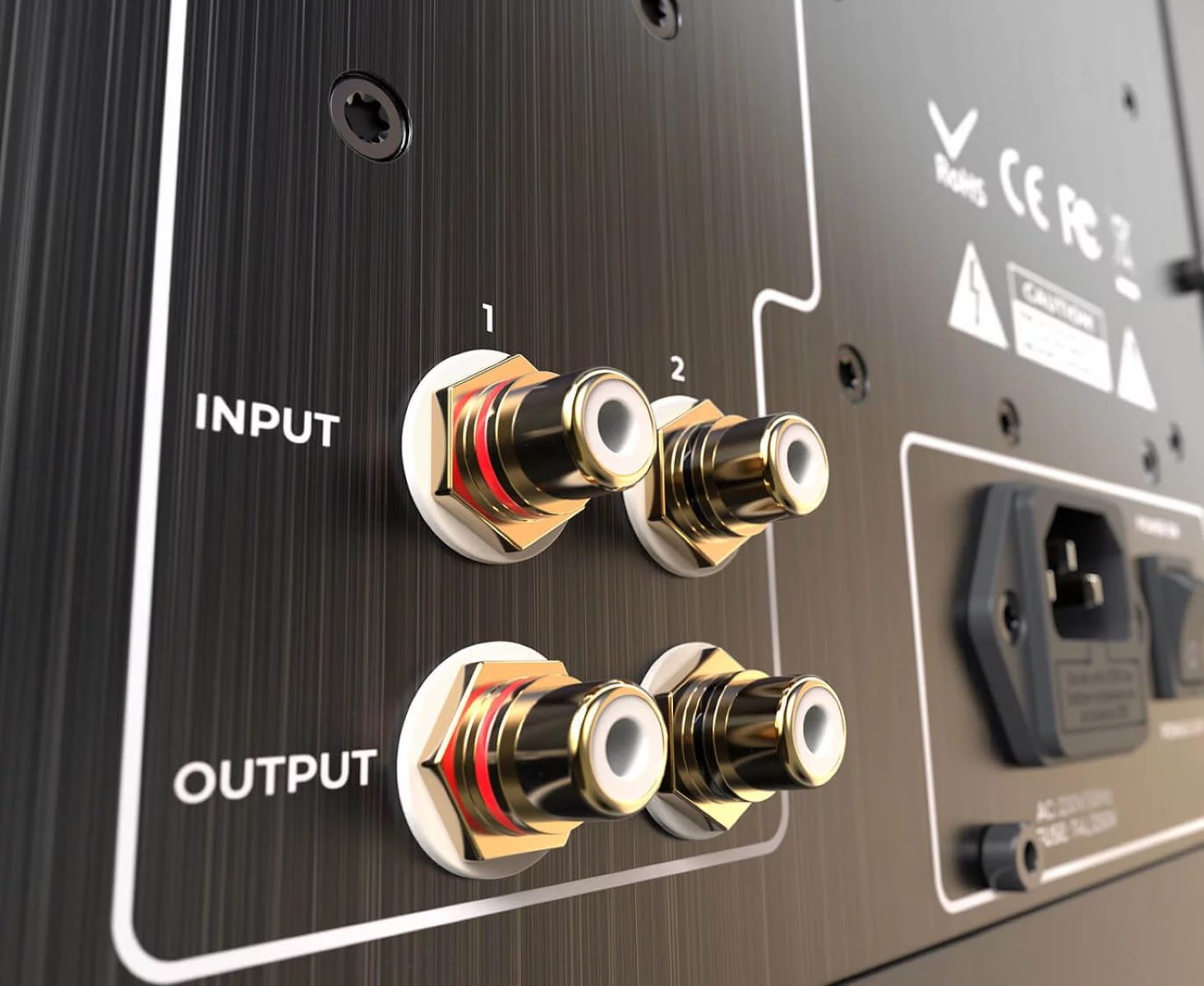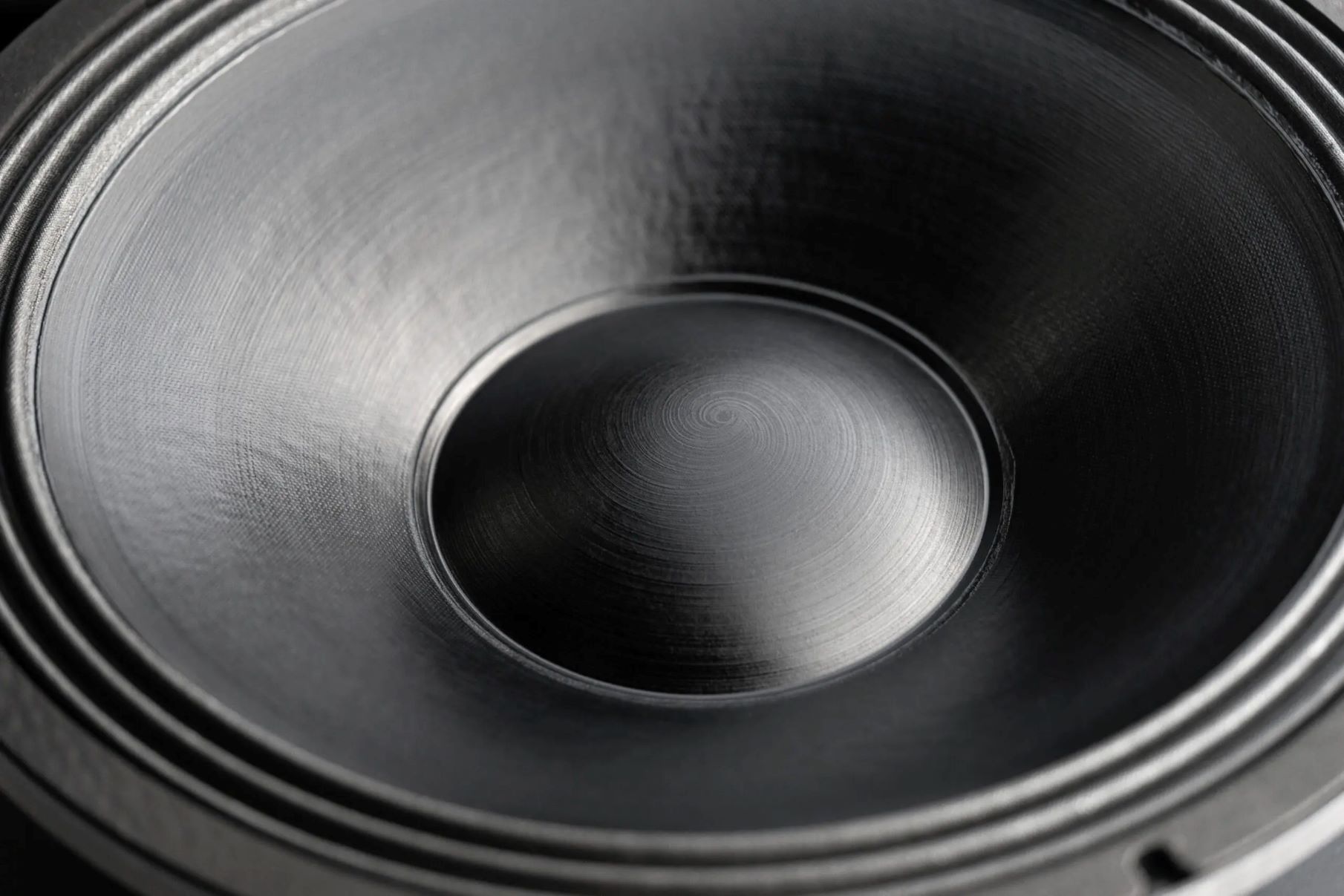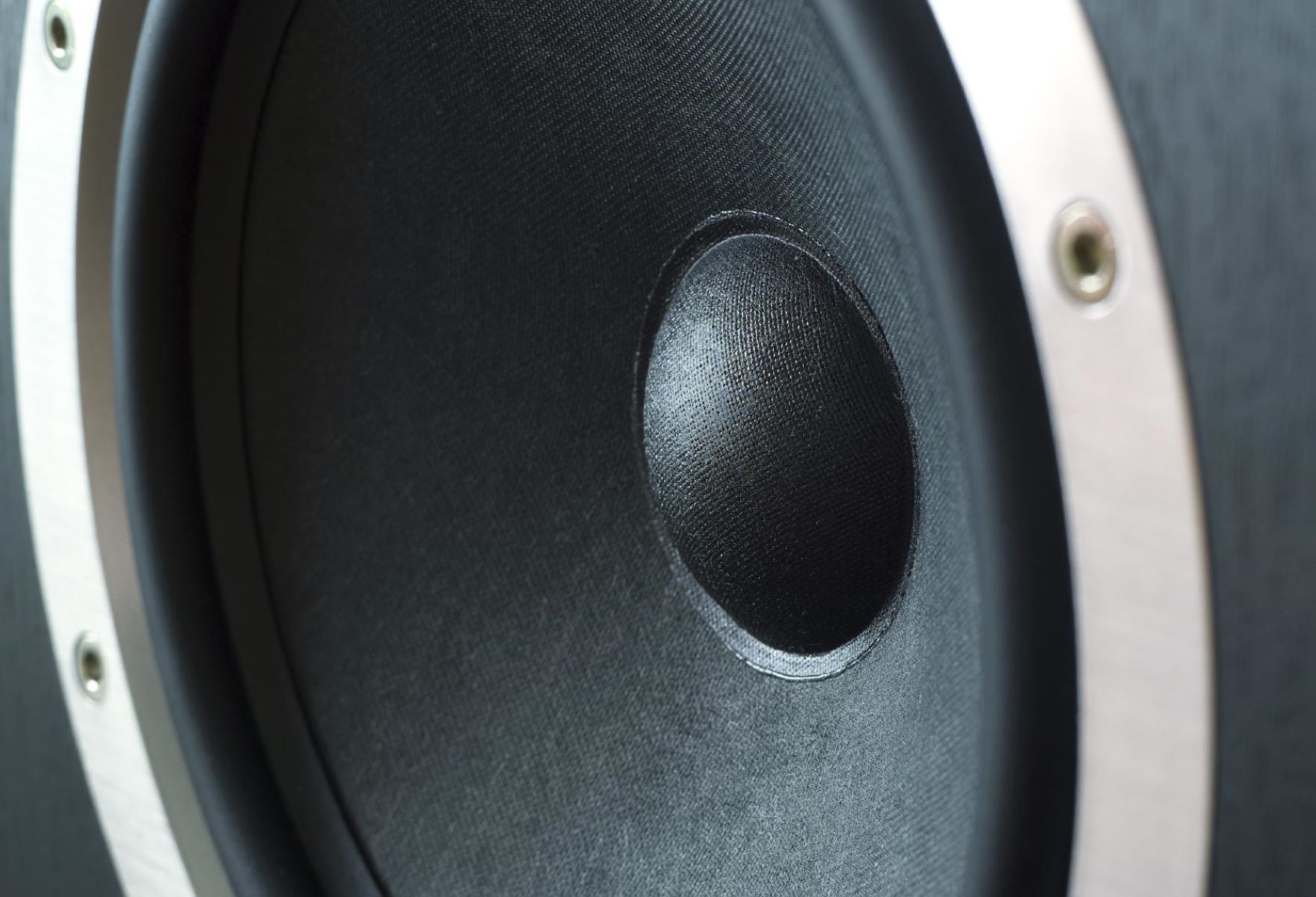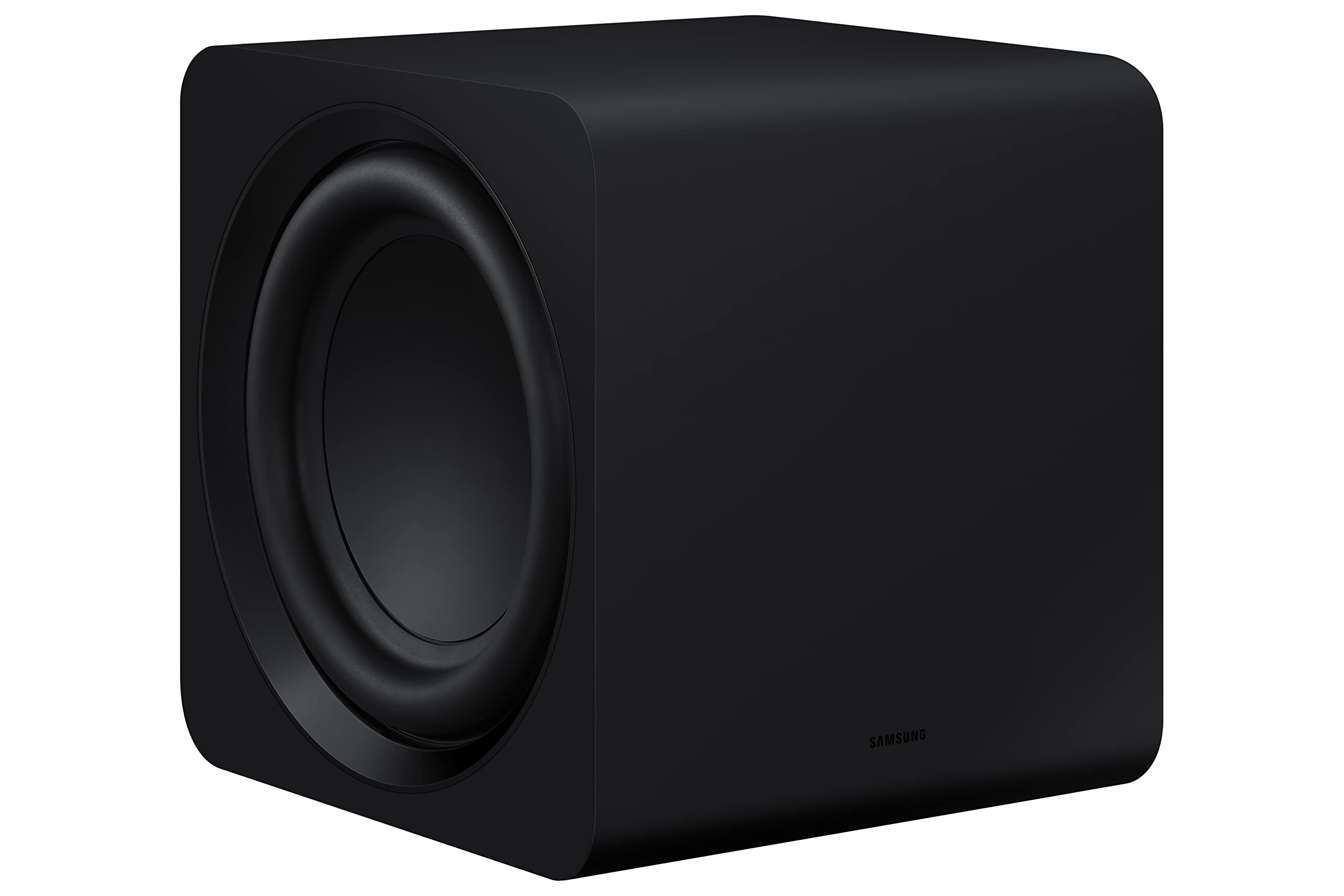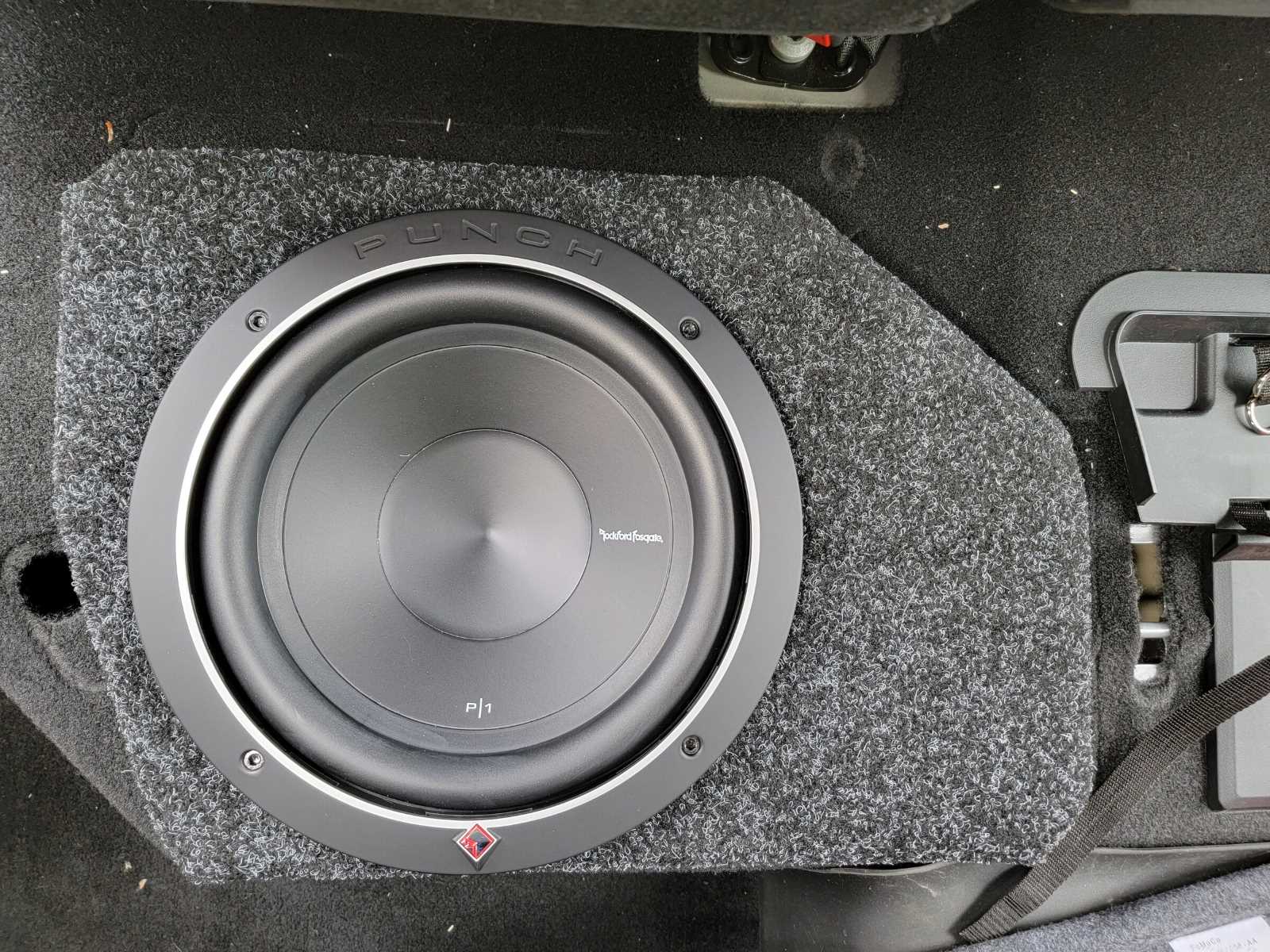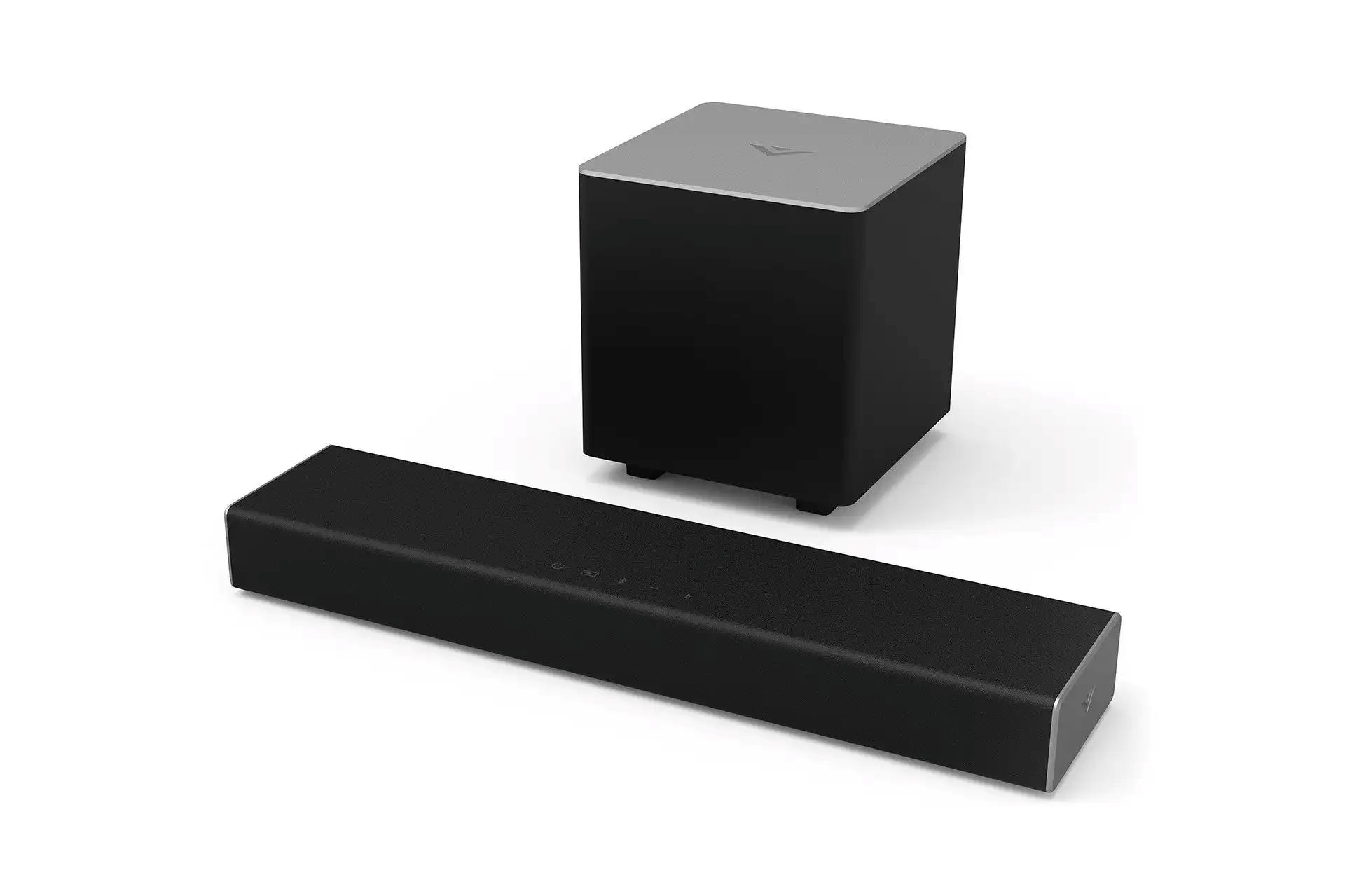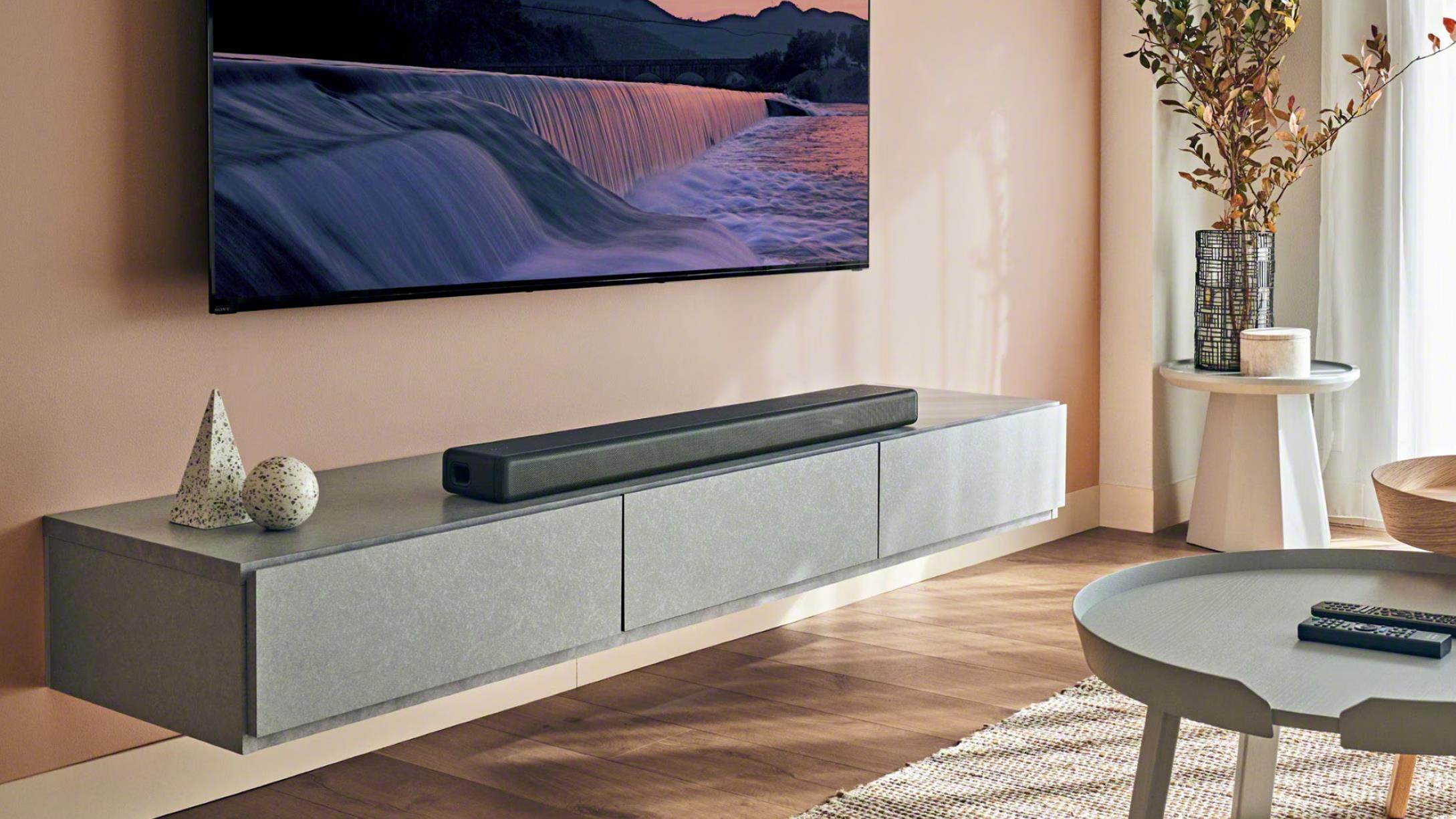Home>Devices & Equipment>Subwoofer>Why Does My Subwoofer Turn On And Off


Subwoofer
Why Does My Subwoofer Turn On And Off
Published: January 21, 2024
Are you experiencing issues with your subwoofer turning on and off? Discover the reasons behind this problem and find solutions to keep your subwoofer consistently powered for optimal performance.
(Many of the links in this article redirect to a specific reviewed product. Your purchase of these products through affiliate links helps to generate commission for AudioLover.com, at no extra cost. Learn more)
Table of Contents
- Introduction
- Possible Causes for Subwoofer Turning On and Off
- Overheating
- Electrical Issues
- Automatic Power Saving Mode
- Signal Interruptions
- Troubleshooting Steps for Subwoofer Turning On and Off
- Check the Temperature
- Inspect Power Connections and Cables
- Disable Automatic Power Saving Mode
- Evaluate Signal Sources and Connections
- Conclusion
Introduction
Welcome to the world of deep bass and immersive audio experience with subwoofers! These powerful speakers are designed to reproduce low-frequency sound waves, providing that extra punch to your music or home theater setup. However, if you’ve noticed that your subwoofer is turning on and off unexpectedly, you might be wondering why this is happening and how to fix it.
Don’t worry, you’re not alone. Many subwoofer owners have encountered this issue, and there are several possible causes for this behavior. Understanding these causes and implementing the necessary troubleshooting steps can help you get your subwoofer back in working order, delivering those thumping basslines as intended.
In this article, we’ll explore the various reasons why your subwoofer might be turning on and off, and provide some practical steps to address the issue. By the end, you’ll have a better understanding of what could be causing the problem and how to resolve it.
Possible Causes for Subwoofer Turning On and Off
There are several factors that can contribute to your subwoofer turning on and off intermittently. Let’s take a closer look at some of the most common causes:
- Overheating: Subwoofers generate a significant amount of heat during operation, especially when playing at high volumes or for extended periods. If the temperature inside the subwoofer exceeds a certain threshold, it may automatically shut off to prevent damage. Overheating can occur due to inadequate ventilation or placement of the subwoofer near heat sources.
- Electrical Issues: Problems with the power supply or electrical connections can cause the subwoofer to turn on and off unexpectedly. Issues like faulty power outlets, loose cables, or power surges can disrupt the power flow and trigger the automatic shutdown mechanism in the subwoofer.
- Automatic Power Saving Mode: Many modern subwoofers come with a power-saving feature that automatically switches off the device when it detects a period of inactivity. While this can conserve energy, it may also lead to the subwoofer turning off during quiet passages in music or movies, which can be frustrating.
- Signal Interruptions: A weak or interrupted signal from the audio source or amplifier can cause the subwoofer to lose connection and turn off. This can happen if the input cables are loose, damaged, or incompatible with the audio equipment.
These are just a few of the possible causes for your subwoofer’s inconsistent behavior. By identifying the root cause, you can take the necessary steps to address the issue and prevent it from recurring.
Overheating
One of the common culprits behind a subwoofer turning on and off is overheating. Subwoofers are designed to handle powerful and prolonged bass output, which generates heat. However, when the internal temperature exceeds safe limits, the subwoofer may shut down to protect itself from damage.
There are a few reasons why your subwoofer might be overheating:
- Inadequate ventilation: Subwoofers need proper airflow to dissipate heat. If the subwoofer is placed in an enclosed space or near heat-emitting devices, it can affect its cooling. Ensure that there is enough space around the subwoofer for ventilation.
- High volume and extended use: Playing music or movies at high volumes for long periods can put a strain on the subwoofer, causing it to heat up faster. If you frequently push your subwoofer to its limits, consider giving it breaks in between or lowering the volume to prevent overheating.
- Faulty internal components: Sometimes, faulty internal components such as the amplifier or power supply can cause excessive heat generation. In this case, it’s best to contact the manufacturer or a professional technician for assistance.
To address overheating issues, try the following troubleshooting steps:
- Check the temperature: Feel the subwoofer’s enclosure or check if there are any built-in temperature indicators to gauge if it is running too hot. If it feels excessively hot to the touch, allow it to cool down before using it again.
- Optimize the placement: Ensure that the subwoofer is placed in a well-ventilated area with enough space around it. Avoid placing it near radiators, heating vents, or other heat-generating equipment.
- Reduce volume and usage time: If you frequently play the subwoofer at high volumes, try lowering the volume or taking breaks to allow the subwoofer to cool down intermittently.
- Inspect and clean: Dust accumulation can impede airflow and cause overheating. Regularly clean the subwoofer’s vents and grilles using a soft brush or cloth to remove any dust or debris.
- Seek professional help: If the problem persists, it’s best to consult the manufacturer or a professional technician to diagnose and repair any internal component issues.
By addressing overheating issues, you can ensure that your subwoofer operates at optimal performance without the annoyance of random power cycling.
Electrical Issues
Electrical issues can be another common cause of subwoofer turning on and off unexpectedly. Problems with the power supply or electrical connections can disrupt the proper functioning of the subwoofer, leading to intermittent power cycles.
Here are some potential electrical issues that you should consider:
- Faulty power outlet: If the power outlet that the subwoofer is plugged into is faulty, it can cause power interruptions. Test the outlet by plugging in another device to see if it functions properly. If not, try using a different outlet or consult an electrician to resolve the issue.
- Loose or damaged cables: Loose or damaged power cables can cause intermittent power supply to the subwoofer, resulting in power cycling. Check that all the power cables are securely connected to both the subwoofer and the power outlet. If any cables are damaged, replace them with new ones.
- Power surges: Power surges can occur due to electrical fluctuations or lightning strikes, leading to sudden bursts of energy that can disrupt the functioning of electronic devices. To protect your subwoofer from power surges, consider using a high-quality surge protector.
If you suspect electrical issues, follow these troubleshooting steps:
- Verify the power outlet: Ensure that the power outlet you are using is in good working condition. Try plugging in the subwoofer to a different outlet to check if the issue persists.
- Check the power cables: Ensure that all power cables are securely connected to both the subwoofer and the power outlet. If any cables are damaged, replace them with new ones.
- Inspect the surge protector: If you are using a surge protector, make sure it is functioning properly. Try plugging in the subwoofer directly to the power outlet to eliminate the surge protector as a potential cause of the problem.
- Test with another device: Connect another device, such as a lamp or a fan, to the same power outlet to see if it experiences any power issues. If it does, the problem may lie with the power supply or electrical wiring in your home. In such cases, it’s best to consult a professional electrician.
By addressing any potential electrical issues, you can ensure a stable and uninterrupted power supply to your subwoofer, eliminating the frustrating power cycling problem.
Automatic Power Saving Mode
Many modern subwoofers come equipped with an automatic power-saving mode, which is designed to conserve energy by turning off the subwoofer when there is no audio signal or during periods of inactivity. While this feature can be beneficial in terms of power consumption, it can also cause the subwoofer to turn on and off unexpectedly during quiet passages in music or movies.
Here are steps you can take to address the issue:
- Disable the power-saving feature: Check the user manual or the settings menu of your subwoofer to see if there is an option to disable the automatic power-saving mode. By disabling this feature, the subwoofer will remain powered on continuously, eliminating any unwanted power cycles.
- Adjust the power-saving settings: If disabling the power-saving mode is not an option, consider adjusting the sensitivity or duration of the power-saving feature. Some subwoofers allow you to customize these settings to better suit your preferences.
By adjusting or disabling the automatic power-saving mode, you can prevent your subwoofer from turning off unexpectedly and ensure a consistent audio experience.
Signal Interruptions
A weak or interrupted signal from the audio source or amplifier can also be a factor in your subwoofer turning on and off unexpectedly. Signal interruptions can occur due to various reasons, such as loose or damaged cables, weak connections, or incompatible audio equipment.
Here are some troubleshooting steps to address signal interruptions:
- Check the cables: Ensure that all the audio cables connecting the subwoofer to the audio source or amplifier are securely plugged in. Loose or damaged cables can lead to signal loss or fluctuations, causing the subwoofer to turn off intermittently. Replace any damaged cables and resecure any loose connections.
- Verify cable compatibility: Ensure that the cables you are using are compatible with both the subwoofer and the audio equipment. Incompatible cables can lead to signal disruptions. Consult the user manual or the manufacturer’s website for information on the recommended cables for your subwoofer.
- Test with different audio sources: Connect the subwoofer to different audio sources, such as a different music player or another device, to see if the issue persists. If the problem only occurs with a specific audio source, there may be compatibility issues or signal problems with that particular device.
- Eliminate interference: Remove any potential sources of interference that may be affecting the signal quality. Keep the subwoofer away from other electronic devices that emit strong electromagnetic fields, such as Wi-Fi routers or microwave ovens.
- Consider a signal booster: If you are experiencing weak signal levels, you may want to consider using a signal booster or a pre-amplifier to enhance the signal strength and quality.
By addressing any signal interruptions, you can ensure a stable and uninterrupted connection between your subwoofer and the audio source or amplifier, eliminating the issue of the subwoofer turning on and off unexpectedly.
Troubleshooting Steps for Subwoofer Turning On and Off
If your subwoofer is turning on and off unexpectedly, it can be frustrating, but there are steps you can take to troubleshoot and resolve the issue. Here are some troubleshooting steps to help you:
- Check the Temperature: Feel the subwoofer’s enclosure or check if there are any built-in temperature indicators to gauge if it is running too hot. If it feels excessively hot to the touch, allow it to cool down before using it again. Ensure that the subwoofer is placed in a well-ventilated area with enough space around it to prevent overheating.
- Inspect Power Connections and Cables: Check all power connections to ensure they are secure and not loose. Examine the power cables for any damage or fraying. Replace any damaged cables with new ones. Additionally, verify that the audio cables connecting the subwoofer to the audio source or amplifier are securely plugged in and functioning properly.
- Disable Automatic Power Saving Mode: If your subwoofer has an automatic power-saving feature, check the user manual or the settings menu to disable it. This will prevent the subwoofer from turning off during periods of inactivity.
- Evaluate Signal Sources and Connections: Check the audio source or amplifier to ensure it is functioning properly. Connect the subwoofer to a different audio source to see if the issue persists. Verify that the audio cables are compatible and properly connected. Remove any potential sources of interference that may affect the signal quality.
By following these troubleshooting steps, you can pinpoint the cause of your subwoofer turning on and off and take appropriate action. However, if the issue persists or if you are unsure about performing any troubleshooting steps, it is recommended to seek assistance from the manufacturer or a professional technician.
Check the Temperature
One of the first troubleshooting steps to take when your subwoofer is turning on and off unexpectedly is to check the temperature. Subwoofers generate heat during operation, especially when playing at high volumes or for extended periods. If the internal temperature of the subwoofer exceeds safe limits, it may automatically shut off to protect itself from damage.
To check the temperature of your subwoofer, you can:
- Feel the subwoofer’s enclosure: Gently touch the surface of the subwoofer’s cabinet. If it feels excessively hot to the touch, this indicates that the subwoofer may be overheating. Allow it to cool down before using it again.
- Check for built-in temperature indicators: Some subwoofers have temperature sensors or indicators that provide an indication of the internal temperature. Refer to the subwoofer’s user manual to locate these indicators and monitor the temperature reading.
If you find that the subwoofer is running too hot, you can take the following steps:
- Ensure proper ventilation: Check the placement of the subwoofer and ensure that it has enough space around it for proper airflow. Avoid placing it in an enclosed space or near heat-emitting devices as this can impede the cooling process.
- Allow for breaks: If you frequently play the subwoofer at high volumes or for extended periods, consider giving it breaks in between to allow it to cool down. Continuous operation without rest can contribute to overheating.
- Inspect external heat sources: Keep the subwoofer away from direct sunlight, radiators, or other heat-emitting devices. These external sources of heat can raise the temperature of the subwoofer and contribute to overheating.
- Clean the vents: Dust accumulation can impede proper airflow and cause overheating. Regularly clean the vents and grilles of the subwoofer using a soft brush or cloth to remove any dust or debris.
- Contact the manufacturer: If the subwoofer continues to overheat even after taking these steps, it may be a sign of faulty internal components. In this case, it is advisable to contact the manufacturer or a professional technician for further assistance.
By monitoring the temperature and implementing these steps, you can address any overheating issues and ensure that your subwoofer operates within safe temperature limits, reducing the chances of it turning on and off unexpectedly.
Inspect Power Connections and Cables
Another important step in troubleshooting a subwoofer that is turning on and off unexpectedly is to inspect the power connections and cables. Issues with power supply or loose/damaged cables can disrupt the proper functioning of the subwoofer and result in intermittent power cycles.
To inspect the power connections and cables, follow these steps:
- Check power connections: Ensure that all power connections to the subwoofer, including the power cord and any additional power cables, are securely plugged in. Sometimes, a loose connection can cause power interruptions and make the subwoofer turn on and off randomly.
- Examine power cables: Inspect the power cables for any signs of damage or fraying. If you notice any exposed wires or visible damage, it is crucial to replace the cables with new ones. Faulty power cables can result in inconsistent power supply and contribute to the subwoofer’s erratic behavior.
- Verify audio cable connections: If your subwoofer is connected to an audio source or amplifier using audio cables, double-check that these connections are secure as well. Loose or improperly connected audio cables can cause signal interruptions, leading to power cycling.
If you find any issues with the power connections or cables, take the following steps to address them:
- Reconnect power cables: If you find any loose power connections, unplug and reconnect them firmly. Ensure that the connections are tight and secure to maintain a consistent power supply to the subwoofer.
- Replace damaged power cables: If you notice any damage or signs of wear on the power cables, it is essential to replace them with new ones. Using damaged cables can pose a safety risk and may lead to further issues with the subwoofer’s performance.
- Secure audio cable connections: If the subwoofer is connected using audio cables, check that these connections are secure as well. Reinsert the audio cables into the appropriate ports and ensure a snug fit.
By inspecting and addressing any issues with the power connections and cables, you can ensure a stable and uninterrupted power supply to your subwoofer, minimizing the likelihood of it turning on and off unexpectedly.
Disable Automatic Power Saving Mode
Many subwoofers come equipped with an automatic power-saving mode, designed to conserve energy by shutting off the subwoofer when there is no audio signal or during periods of inactivity. While this feature can be beneficial in terms of power consumption, it can also cause the subwoofer to turn on and off unexpectedly during quiet passages in music or movies.
If you suspect that the automatic power-saving mode is causing the issue, follow these steps to disable it:
- Refer to the subwoofer’s user manual: Consult the user manual that came with your subwoofer or visit the manufacturer’s website to find information about the power-saving feature and how to disable it. The manual will provide specific instructions for your particular subwoofer model.
- Access the settings menu: Most subwoofers with a power-saving mode allow you to access the settings menu using either physical buttons on the subwoofer itself or a remote control. Look for an option related to power-saving or idle mode.
- Disable the automatic power-saving mode: Once you have accessed the settings menu, locate the option to disable the power-saving mode. This may be labeled as “Idle Mode,” “Standby Mode,” or “Auto Power Off.” Follow the instructions provided in the user manual to toggle off or disable this feature.
- Save the settings: After disabling the automatic power-saving mode, ensure that you save the changes by selecting the appropriate option in the settings menu. This will ensure that the subwoofer remains powered on continuously without turning off unexpectedly.
By disabling the automatic power-saving mode, you can prevent the subwoofer from turning off during periods of inactivity and maintain a consistent audio experience. However, keep in mind that disabling this feature may result in slightly higher power consumption, so consider your energy-saving preferences and usage patterns before making this adjustment.
Evaluate Signal Sources and Connections
A weak or interrupted signal from the audio source or amplifier can cause your subwoofer to turn on and off unexpectedly. Signal interruptions can be attributed to loose or damaged cables, weak connections, or compatibility issues between the subwoofer and the audio equipment.
To evaluate the signal sources and connections, follow these troubleshooting steps:
- Check cable connections: Ensure that all audio cables connecting the subwoofer to the audio source or amplifier are securely plugged in. Loose or improperly connected cables can result in intermittent signal loss and cause the subwoofer to turn off randomly. Reinsert the cables firmly to ensure a proper connection.
- Inspect cable quality: Check the quality of the audio cables. Look for any signs of damage, such as frayed wires or exposed metal. If you notice any damage, replace the cables with new ones to ensure a reliable and uninterrupted signal transmission.
- Verify cable compatibility: Make sure that the audio cables you are using are compatible with both the subwoofer and the audio equipment. Some subwoofers may require specific types of cables for optimal performance. Refer to the user manual or the manufacturer’s website to identify the recommended cables for your subwoofer.
- Test with different audio sources: Connect the subwoofer to a different audio source, such as a different music player or another device, to check if the issue persists. If the problem only occurs with a specific audio source, there may be compatibility issues or signal problems with that particular device.
- Remove potential sources of interference: Keep the subwoofer away from other electronic devices that emit strong electromagnetic fields, such as Wi-Fi routers, microwave ovens, or cordless phones. These devices can interfere with the audio signal and lead to signal interruptions.
By evaluating the signal sources and connections, you can address any potential issues that might be causing the subwoofer to turn on and off unexpectedly. Proper cable connections, quality cables, and minimizing sources of interference will help ensure a stable signal flow and prevent interruptions in the audio playback.
Conclusion
Having a subwoofer that turns on and off unexpectedly can be frustrating, but with the right troubleshooting steps, you can resolve the issue and enjoy uninterrupted bass performance. By considering the possible causes, including overheating, electrical issues, automatic power-saving mode, and signal interruptions, you can identify the root cause and take the necessary steps to address it.
Start by checking the temperature of the subwoofer to ensure it is not overheating. Proper ventilation, reducing volume levels, and regular cleaning of the vents can help prevent overheating. Inspect power connections and cables to ensure they are secure and free from damage. If needed, replace faulty cables to ensure a consistent power supply. Consider disabling the automatic power-saving mode on your subwoofer if it is causing unnecessary power cycles. Lastly, evaluate signal sources and connections by checking cable connections, cable quality, and potential sources of interference.
Remember, if you are unsure about performing any troubleshooting steps or if the issue persists, it is always recommended to consult the manufacturer or a professional technician for assistance.
By being proactive and taking the necessary steps to troubleshoot and address the issue, you can enjoy the immersive and powerful bass experience that your subwoofer is designed to provide, without the frustration of it turning on and off unexpectedly.

